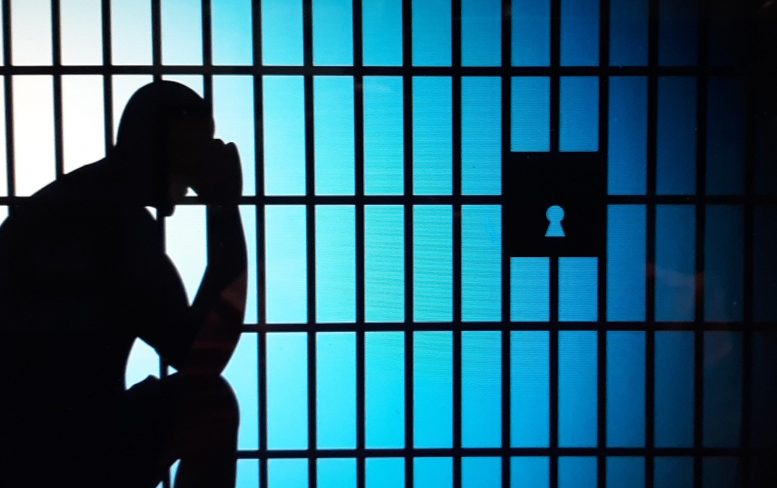By JAN LARSON McLAUGHLIN
BG Independent News
An estimated 2 million people with serious mental illnesses are imprisoned each year in U.S. jails.
That makes no sense, according to Wood County Sheriff Mark Wasylyshyn.
“Nationally, sheriffs are the number one provider of mental health in this country,” Wasylyshyn said. “There’s got to be a better way.”
Not only do inmates with mental illness tend to stay in jail longer, but they tend to return more frequently – with their needs going unmet in jail and often once they are released.
“It’s a revolving door for them,” the sheriff said. “It’s very frustrating.”
Jails have become de facto in-patient psychiatric facilities across the nation. Ohio is no exception, with an estimated 30 percent or more of the individuals in jail having mental illnesses.
Incarceration takes a toll on these individuals and their families, and costs the taxpayers.
So Wood County has joined 46 other Ohio counties in Stepping Up, a national initiative to reduce the number of people with mental illnesses in jails.
Last week, Wood County officials – judges, law enforcement, treatment community, hospitals, and others – learned about the Stepping Up program being adopted across the nation. The program is aimed at reversing the cycle of jails being de facto hospitals so people with mental illness can get treatment in the community.
In Ohio, the Stepping Up Initiative is being led by retired Justice Evelyn Lundberg Stratton, and privately funded by Peg’s Foundation. Peg’s Foundation was formed by a woman whose son had schizophrenia.
“We’re not interested in the status quo. We’re interested in innovation,” said Thom Craig, the mental health program director with Peg’s Foundation. “Who’s doing the things that really improve the lives of people with mental illness?”
One of the goals of Stepping Up is to divert people with mental illness from jail and get them into treatment if appropriate. Most jails do have a mental health assessment for new inmates, but the information from those assessments often doesn’t make it to the courts for arraignments, Stratton said.
The closing down of mental hospital beds has led to many people ending up in jail rather than treatment. And in some cases, inmates prefer jail to a mental hospital, Stratton said.
“The fear of going to a hospital is more serious than the fear of going to jail,” she said.
“This is the worst way to deal with this problem,” Stratton said.
Instead of jail or hospitalization, many would benefit from assisted outpatient treatment.
Some of the ideas discussed last week included specialized mental health dockets in the courts, and the need for crisis centers able to accept drop-offs 24/7.
In some cases now, law enforcement officers have no options other than jail or a hospital emergency room.
“Officers can’t sit and wait with them, so they go to jail,” Stratton said.
“How can we make sure people don’t languish in emergency rooms, and law enforcement doesn’t get stuck taking them to jail,” she said.
Stratton told of one case in another area where it took an inordinate amount of time to find placement for a person with mental illness.
“They sat in the ER for three days,” she said.
Craig talked about the top priorities for better handling inmates with mental illness. The first is improving crisis response, followed by housing, sharing of data, and transportation.
Within the criminal justice system, there are multiple points at which people with mental illness can be “intercepted” and diverted to the mental health treatment system. According to the Stepping Up Initiative, these are places where changes are needed:
Law enforcement and emergency services:
- Training 911 dispatchers and emergency responders to recognize and respond safely and effectively.
- Create partnerships between first responders and mental health crisis services so that law enforcement can link people in need to treatment.
Initial detention and initial court hearings:
- Screening for mental illness, substance use disorders and trauma history to identify those eligible for diversion.
- Linking to comprehensive services and assisting defendants in complying with conditions of pretrial release.
Jails and courts:
- Maximizing potential for diversion in specialty court dockets.
- Monitoring progress with scheduled court appearances and information sharing between courts and service providers.
- Providing services consistent with community and public health standards in jails.
Re-entry:
- Assessing needs and risks, and coordinating care with community behavioral health and supervision agencies.
- Planning for treatment and support that addresses needs.
Community corrections and community support:
- Assuring that community corrections and community mental health and addiction professionals work together.
- Connecting individuals to employment and supportive health services and housing.
- Ensuring that treatment addresses mental health, addiction and criminogenic risks and needs.

